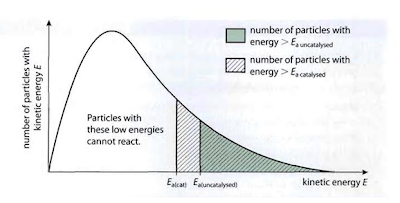B -D as as pH can be measured as well
A
D -definition of rate of reaction (the concentration per unit time)
A -B. It is not A because magnesium is excess and the concentration of the hydrochloric acid will affect the reaction (increasing the concentration will speed up the reaction.
D -C because Adding a catalyst: the activation energy decreases as a catalyst offers an alternative route with a different (but lower) activation energy.
D -B because the size of the CaCO3 does not mean the surface area but the actual size. So the surface are is not increased.
C
a). Measuring the mass of reactants (g) using a top pan balance
The Volume of CO2 being produced, collected in a gas syringe (cm3) and using a stopwatch to measure time (seconds)
Measuring the pH by the using the pH probe of solution and how long it takes to reach 7 (hitting neutralization)
b). Increase in temperature -This will increase the aerage kinetic energy of particles, resulting an increase of collision frequent. Therefore there is a higher number of particles with average kinetic energy > Ea
Adding a catalyst -An alternative route is provided with lower Activation energy so more particles has the value of average kinetic energy that is higher than Ea so there is more collisions.
Increase of surface are -since there is more particles, the chances is higher for successful collisions
c). i) Stay the samesince the MgCO3 is excess and HCl is the limiting factor.
ii). Increase. -Stay the same because the concentration of the reactant stays the same so the volume of the product stays the same.




















